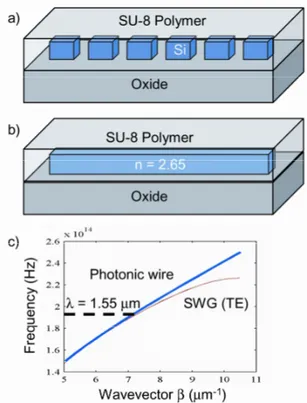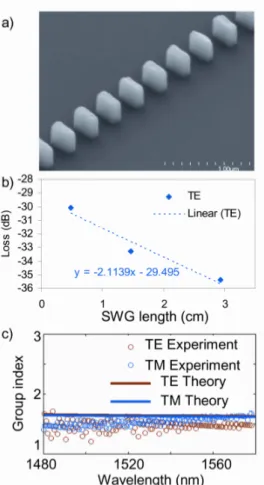Publisher’s version / Version de l'éditeur:
Proceedings. Winter Topicals (WTM 2011), pp. 147-148, 2011
READ THESE TERMS AND CONDITIONS CAREFULLY BEFORE USING THIS WEBSITE. https://nrc-publications.canada.ca/eng/copyright
Vous avez des questions? Nous pouvons vous aider. Pour communiquer directement avec un auteur, consultez la
première page de la revue dans laquelle son article a été publié afin de trouver ses coordonnées. Si vous n’arrivez pas à les repérer, communiquez avec nous à PublicationsArchive-ArchivesPublications@nrc-cnrc.gc.ca.
Questions? Contact the NRC Publications Archive team at
PublicationsArchive-ArchivesPublications@nrc-cnrc.gc.ca. If you wish to email the authors directly, please see the first page of the publication for their contact information.
NRC Publications Archive
Archives des publications du CNRC
This publication could be one of several versions: author’s original, accepted manuscript or the publisher’s version. / La version de cette publication peut être l’une des suivantes : la version prépublication de l’auteur, la version acceptée du manuscrit ou la version de l’éditeur.
For the publisher’s version, please access the DOI link below./ Pour consulter la version de l’éditeur, utilisez le lien DOI ci-dessous.
https://doi.org/10.1109/PHOTWTM.2011.5730090
Access and use of this website and the material on it are subject to the Terms and Conditions set forth at
Refractive Index Engineering with Subwavelength Gratings in Silicon
Microphotonic Waveguides
Schmid, J. H.; Cheben, P.; Bock, P. J.; Lapointe, J.; Janz, S.; Delâge, A.;
Densmore, A.; Hall, T. J.; Lamontagne, B.; Ma, R.; Xu, D.-X.
https://publications-cnrc.canada.ca/fra/droits
L’accès à ce site Web et l’utilisation de son contenu sont assujettis aux conditions présentées dans le site LISEZ CES CONDITIONS ATTENTIVEMENT AVANT D’UTILISER CE SITE WEB.
NRC Publications Record / Notice d'Archives des publications de CNRC:
https://nrc-publications.canada.ca/eng/view/object/?id=4f93315e-c021-4c94-a6ef-5a34b58e7e9f https://publications-cnrc.canada.ca/fra/voir/objet/?id=4f93315e-c021-4c94-a6ef-5a34b58e7e9f
Abstract— We present a method of engineering the waveguide
core refractive index locally on a silicon photonic chip using subwavelength gratings. Applications such as efficient waveguide crossings, fiber-chip couplers and multiplexer circuits are discussed.
I. INTRODUCTION
I
n integrated photonic circuits, the refractive index contrast is generally set by the choice of the material platform. For example, for silicon photonic circuits operating at a wavelength near λ = 1.55 µm the waveguide core and the cladding indices are given by the material constants of silicon (n = 3.5) and silicon dioxide (n = 1.44) and waveguide devices are designed within the constraint of these fixed values. Here, we discuss how subwavelength gratings can be used in a photonic circuit to change the refractive index of the waveguide core medium locally, thus providing a new degree of freedom in photonic circuit design.II. SUBWAVELENGTH GRATING EFFECT
The use of subwavelength gratings (SWGs), i.e. periodic dielectric structures with a periodicity smaller than one half of the wavelength of light, is well established in free space optics. It is known that such structures do not diffract any light but instead act as homogeneous effective media with spatially averaged refractive index [1]. The exact averaging formula depends on the geometry of the SWG as well as the polarization of the light. An example for the use of an SWG for refractive index engineering of a silicon photonic wire waveguide is shown in Fig. 1a. Periodic gaps of a well defined width w and pitch Λ are etched into a standard silicon photonic wire thus forming an SWG waveguide with an effective core refractive index determined by the duty ratio w/Λ. To confirm theoretically the concept of spatial refractive index averaging in an SWG waveguide with Λ = 0.3 µm and 50% duty ratio we compare its dispersion relation with that of an equivalent photonic wire waveguide with identical cross section and averaged core index of n = 2.65, as shown in Fig. 1b. The two dispersion curves are overlaid in Fig. 1c. The SWG waveguide
Corresponding author: Jens Schmid. E-mail: jens.schmid@nrc-cnrc.gc.ca.
shows the typical behaviour expected for a periodic structure, namely a flattening of the dispersion as the Bragg condition is approached at β ≈ 10.5 µm-1
, corresponding to a free space wavelength of λ = 1.33 µm. For the operating wavelength of 1.55 µm, however, the dispersion curves of the segmented and the equivalent photonic wire waveguide are well matched.
Fig. 1a) Schematic of a silicon subwavelength grating waveguide. b) Equivalent photonic wire waveguide with spatially averaged core refractive index. c) Comparison of the calculated dispersion (TE polarization) of the waveguides shown in a) and b).
A scanning electron microscope image of a fabricated SWG waveguide can be seen in Fig. 2a. Propagation loss was determined to be 2.1 dB/cm and independent of polarization by measuring insertion loss as a function of waveguide length, as shown in Fig 2b. This value is better than typically obtained for our nominal photonic wire waveguides (~3 dB/cm) and in fact comparable to the best wire waveguides reported. The low loss obtained in spite of the many strong index discontinuities
Refractive Index Engineering with Subwavelength
Gratings in Silicon Microphotonic Waveguides
J. H. Schmid1, P. Cheben1, P. J. Bock2, J. Lapointe1, S. Janz1, A. Delâge1, A. Densmore1, T. J. Hall2, B. Lamontagne1, R. Ma1, and D.-X. Xu1
1
Institute for Microstructural Sciences, National Research Council Canada Ottawa, Ontario, Canada K1A 0R6
2
Centre for Research in Photonics, University of Ottawa, 800 King Edward Avenue, Ottawa, Ontario, Canada K1N 6N5
147
TuC3.2 (Invited) 2:30 PM - 3:00 PM
in the waveguide is experimental evidence for the spatial averaging effect, which results in an effectively lower index contrast waveguide. The group index of the SWG waveguides was determined from the fringe spacing in the transmission spectra of Mach-Zehnder interferometers in which one arm consisted of a SWG waveguide while the other arm was a standard photonic wire with known group index. The result for the group index as a function of wavelength is shown in Fig. 2c. In good agreement with theoretical predictions we observed a low, nearly constant and polarization independent group index across the wavelength range [2].
Fig. 2 a) Scanning electron micrograph of an SWG waveguide. b) Measurement of insertion loss as a function of waveguide length. c) Theoretical and measured waveguide group index as a function of wavelength.
III. APPLICATIONS
We have recently demonstrated several applications of subwavelength refractive index engineering for silicon photonic components [3,4]. We demonstrated that SWG waveguides can be used to make highly efficient waveguide crossings. The ability to intersect waveguides with low loss and crosstalk is an important prerequisite for designing complex high density photonic circuits. SWG waveguide loss per crossing was measured to be as low as 0.02 dB with polarization dependent loss of less then 0.015 dB and crosstalk
<-40 dB. These low values can be explained by the effectively lower index contrast of the SWG waveguides, which results in a reduction of scattering at the crossing. In addition, mode delocalization reduces the overlap of the mode with the crossed over waveguide. We have also demonstrated a highly efficient fiber-chip coupler based on SWG waveguides. The coupler structure works by gradual modification of the waveguide core index leading to mode size transformation between a high index photonic wire and the low index optical fiber. Measured coupling loss is 0.9 dB for TE and 1.2 dB for TM polarization. An SWG slab waveguide structure which simultaneously acts as a lateral cladding for a photonic wire waveguide in a novel microspectrometer design was also described in [4].
The spatial averaging effect can also be used to reduce or eliminate the temperature dependence of waveguide devices by combining two materials with opposite thermo-optic coefficients at the subwavelength scale. For example using the material constants of silicon (dn/dT = 1.9×10-4
K-1) and SU-8 polymer (dn/dT = -1.1×10-4
K-1) the temperature dependence of the effective index of the SWG waveguide structure shown in Fig. 1a can be calculated. For a waveguide cross section of 0.26 µm × 0.45 µm, we find that athermal behavior (dneff/dT =
0) is achieved for a silicon duty ratio of 57% and 82% for TE and TM polarized light, respectively.
IV. SUMMARY
We have provided theoretical and experimental evidence for the spatial averaging effect in SWG waveguides used in silicon photonic circuits. Several applications were described that demonstrate the obvious advantages of having a new degree of freedom in photonic circuit design afforded by SWG refractive index engineering.
ACKNOWLEDGMENT
This work is supported in part by the Genome and Health Initiative (GHI) program of the National Research Council Canada (NRC).
REFERENCES
1 S. M. Rytov, “Electromagnetic properties of a finely stratified medium,” Sov. Phys. JETP 2 466-475 (1956).
2 P. J. Bock, P. Cheben, J. H. Schmid, J. Lapointe, A. Delâge, S. Janz, G. C. Aers, D.-X. Xu, A. Densmore, T. J. Hall, “Subwavelength grating periodic structures in silicon-on-insulator: a new type of microphotonic waveguide,” Optics Express 18 (19) 20251-20262 (2010).
3 P. J. Bock, P. Cheben, J. H. Schmid, J. Lapointe, A. Delâge, D.-X. Xu, S. Janz, A. Densmore, T. J. Hall, “subwavelength grating crossings for silicon wire waveguides,” Optics Express 18 (15) 16146-16155 (2010). 4 P. Cheben, P. J. Bock, J. H. Schmid, J. Lapointe, S. Janz, D.-X. Xu, A.
Densmore, A. Delâge, B. Lamontagne, T. J. Hall, “Refractive index engineering with subwavelength gratings for efficient microphotonic couplers and planar waveguide multiplexers,” Optics Letters 35 (15) 2526-2528 (2010).

